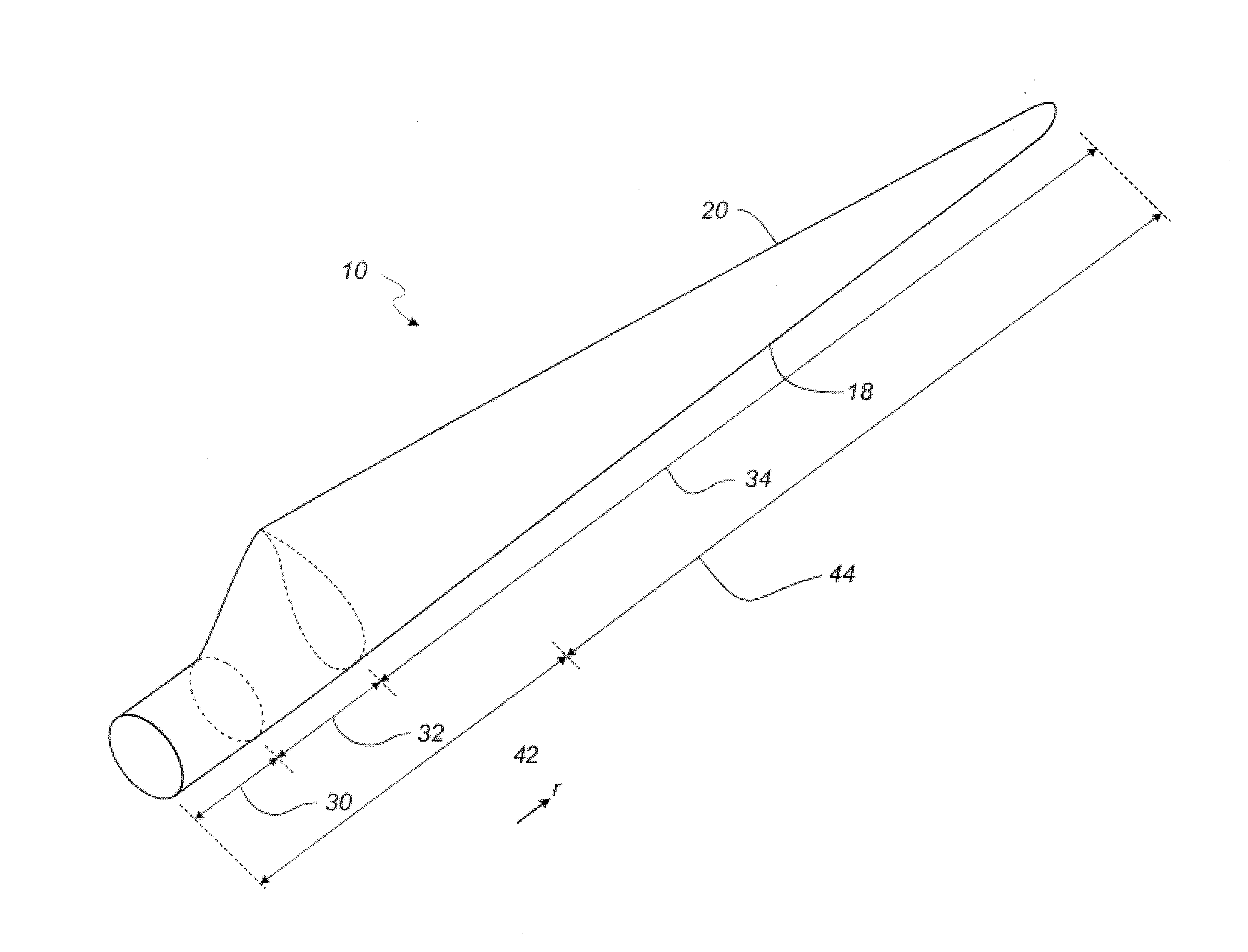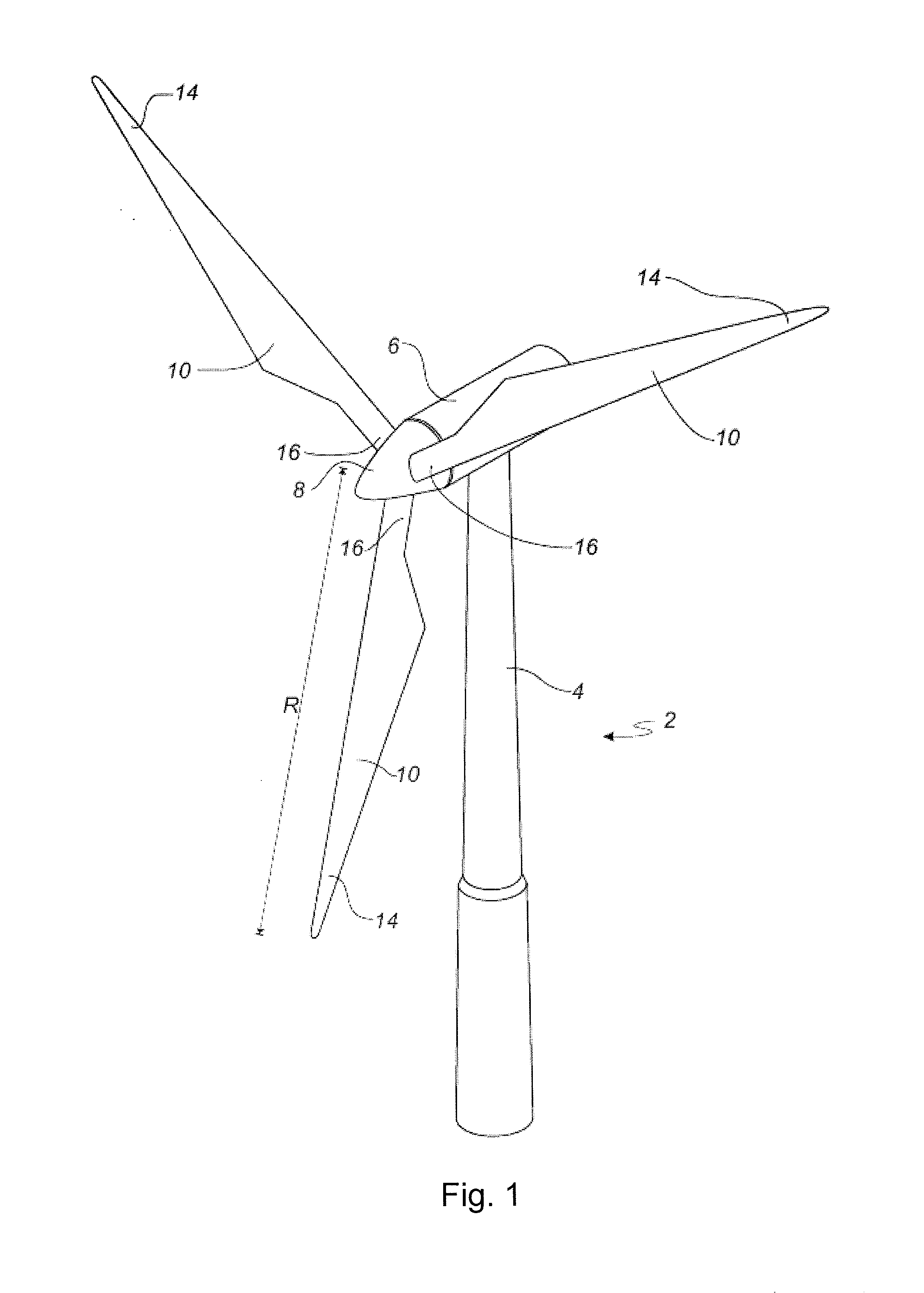A Post-Moulding Station and an Associated Method of Manufacture of a Wind Turbine Blade
a manufacturing method and technology of a wind turbine blade, which are applied in the direction of wind energy generation, liquid fuel engine components, non-positive displacement fluid engines, etc., can solve the problems of high-quality blade moulds, blade moulds in use, and considerable cost and lead time in the implementation of a manufacturing process for a new wind turbine blade. achieve the effect of improving the access to different sections of the contained blade shell
- Summary
- Abstract
- Description
- Claims
- Application Information
AI Technical Summary
Benefits of technology
Problems solved by technology
Method used
Image
Examples
Embodiment Construction
[0162]An embodiment of the invention will now be described, by way of example only, with reference to the accompanying drawings, in which:
[0163]FIG. 1 shows a wind turbine;
[0164]FIG. 2 shows a schematic view of a wind turbine blade;
[0165]FIG. 3 shows a schematic view of an airfoil profile of the blade of FIG. 2;
[0166]FIG. 4 illustrates an embodiment of a manufacturing process for a wind turbine blade according to the invention;
[0167]FIG. 5 is a top plan view of an embodiment of a post-moulding station for use in the manufacture of a wind turbine blade according to the invention;
[0168]FIG. 6 is a perspective view of the post-moulding station of FIG. 5;
[0169]FIG. 7(a) is a side view of the post-moulding station of FIG. 5 when in an open state;
[0170]FIG. 7(b) is a side view of the post-moulding station of FIG. 5 when in a closed state;
[0171]FIG. 8(a) is an end view of the post-moulding station of FIG. 5 when in an open state;
[0172]FIG. 8(b) is an end view of the post-moulding station o...
PUM
| Property | Measurement | Unit |
|---|---|---|
| length | aaaaa | aaaaa |
| chord length | aaaaa | aaaaa |
| bonding pressure | aaaaa | aaaaa |
Abstract
Description
Claims
Application Information
 Login to View More
Login to View More - R&D
- Intellectual Property
- Life Sciences
- Materials
- Tech Scout
- Unparalleled Data Quality
- Higher Quality Content
- 60% Fewer Hallucinations
Browse by: Latest US Patents, China's latest patents, Technical Efficacy Thesaurus, Application Domain, Technology Topic, Popular Technical Reports.
© 2025 PatSnap. All rights reserved.Legal|Privacy policy|Modern Slavery Act Transparency Statement|Sitemap|About US| Contact US: help@patsnap.com



